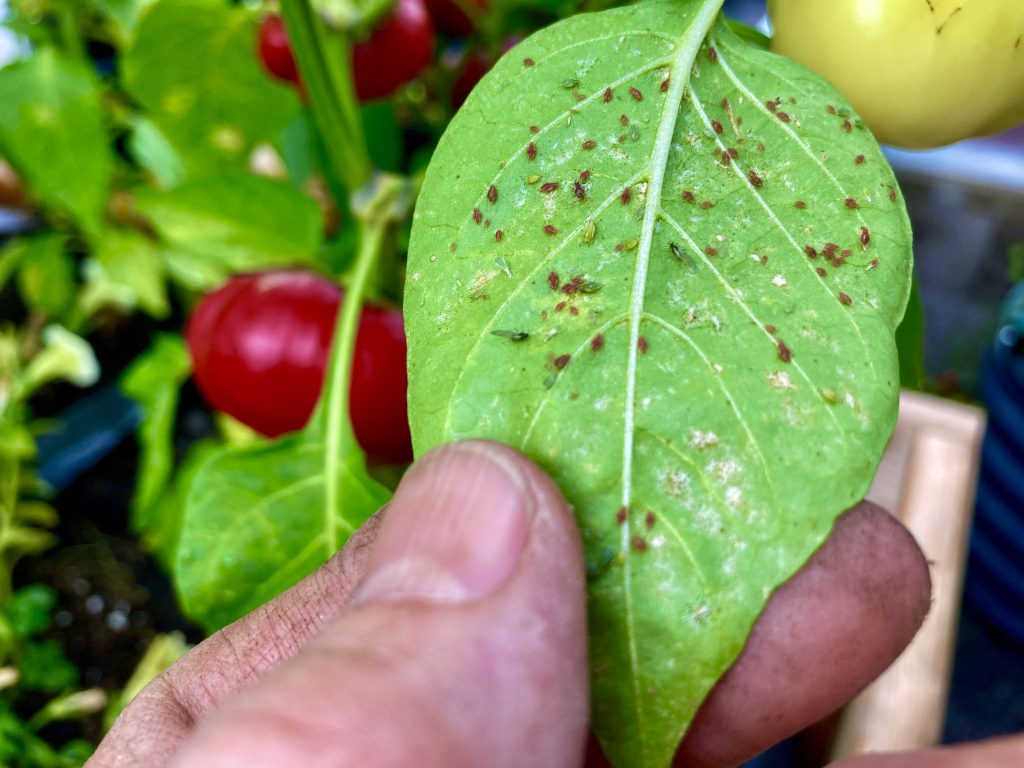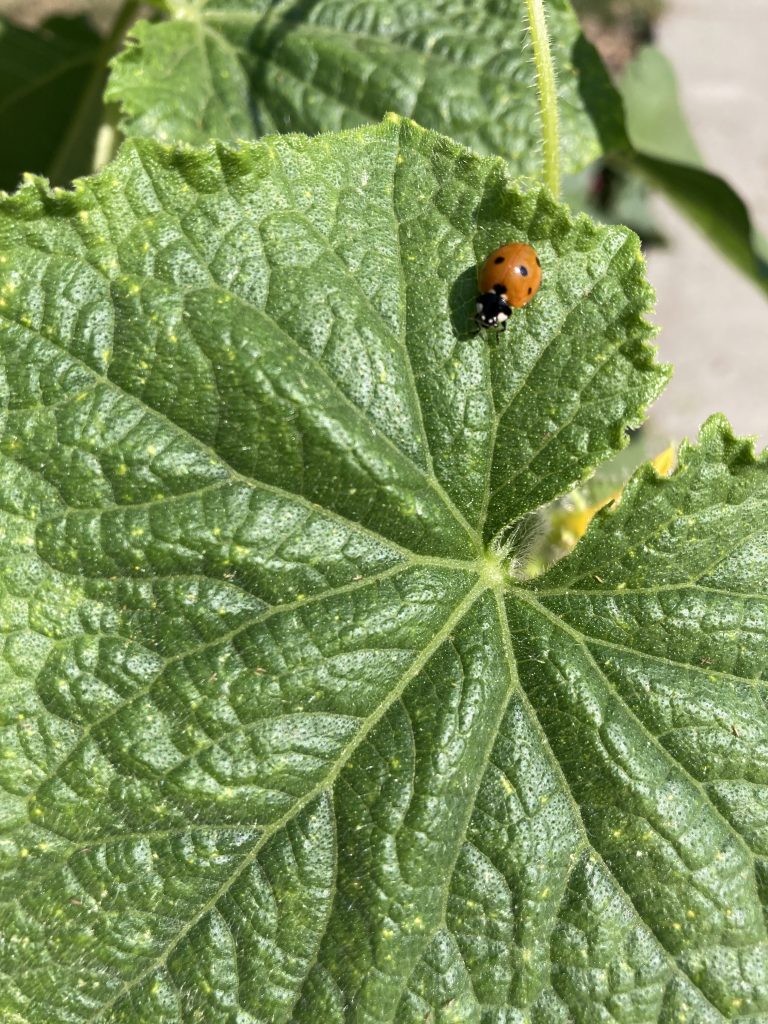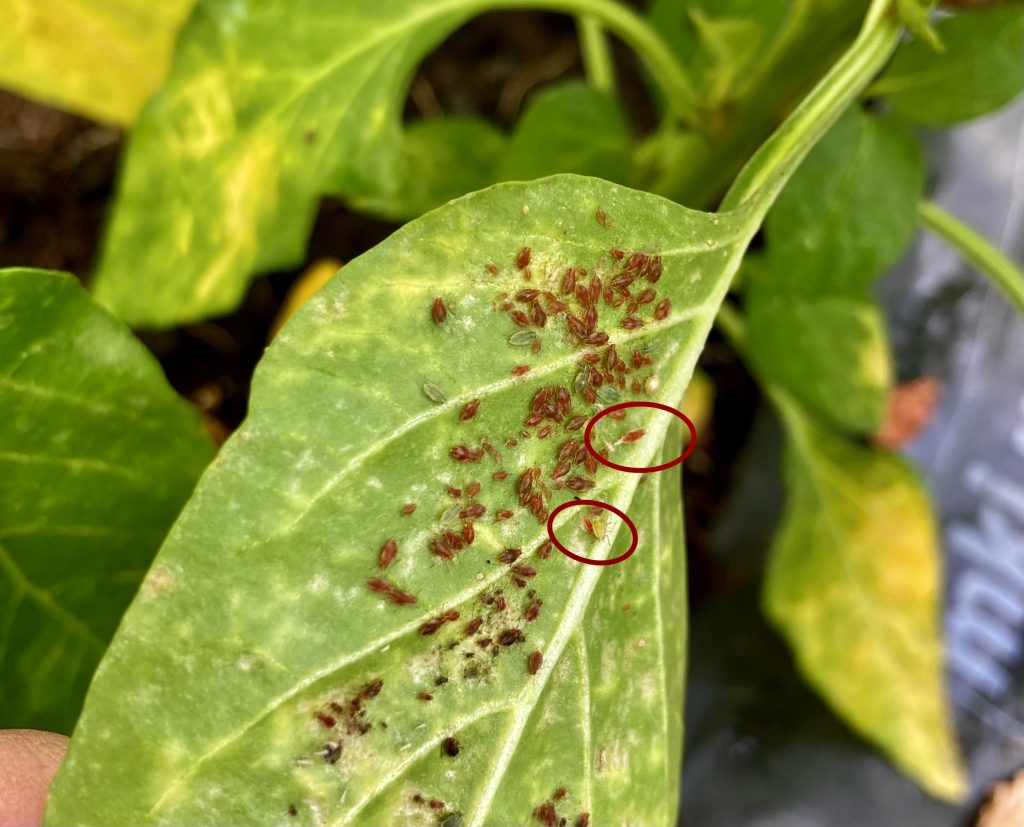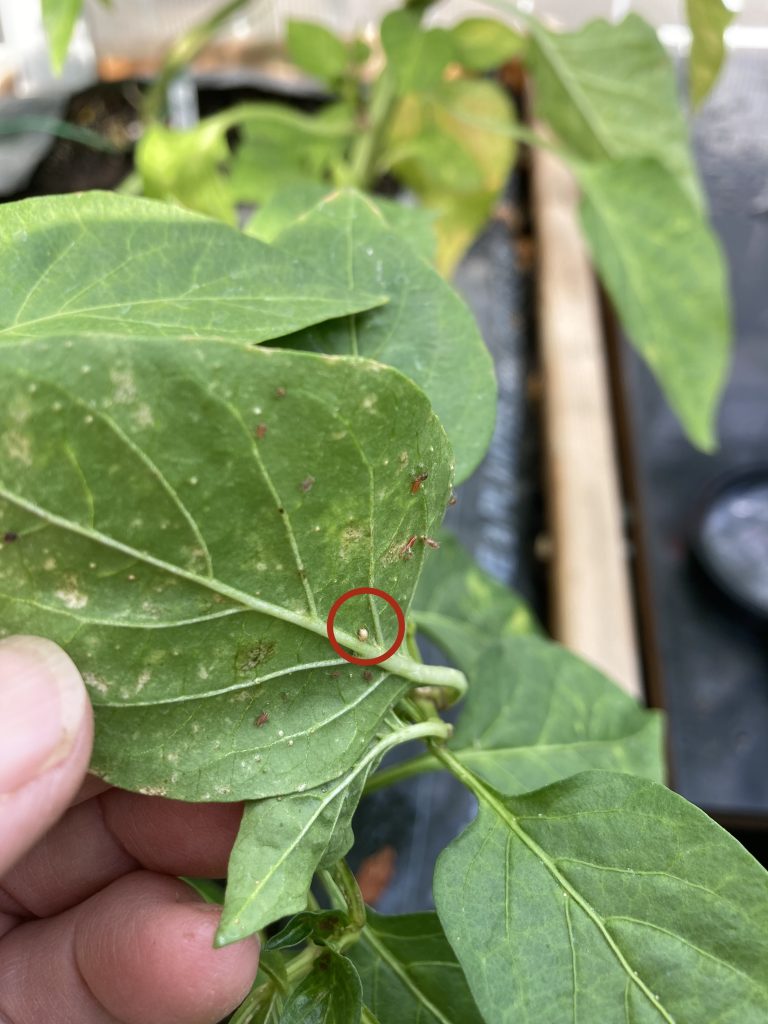GOOD BUGS TO THE RESCUE!
What eats 10-100 aphids in less than a week, comes free of charge right into your garden and greenhouse and leaves leaves clean of aphids? I’ve written about aphidoletes before but this is the first time I was able to get before and after photos with my i-phone to share with readers. And in a week I went from haphazard to happy – with no effort on my part.
Perhaps you have the same aphid problem and the solution is already existing in your garden?

Aphids of various kinds suddenly appear on the underside of leaves mid-late summer. If you panic and spray the problem at this stage, you may end up with a worse problem as you kill off the baby with the bathwater (kill the beneficial bugs along with the bad bugs.) It is better to wait for and encourage good bugs to find you and your garden. Good bugs to the rescue!
Aphids Lay Live Young
Aphids are found in every garden in North America and beyond. They come in a variety of colours and – instead of hanging around laying eggs, the adults simply lay live young. I didn’t believe this until I saw a photo of an aphid laying a baby, laying a baby.
Ants are aphid friends and are not considered a good friend to gardeners and are not likely to come to your rescue. In fact, ants move aphids from leaf to leaf and from plant to plant so they will always have a steady diet of honeydew – basically aphid pee. Meanwhile aphids, in late summer, are starting to get wings, look for a warm place to hang out and laying plenty of live young and eventually eggs. Luckily aphidoletes and other good bugs are flying around looking for your aphids right now so they can take care of your problem. Good bugs to the rescue!

Lady beetles are a well known aphid predator and are a good friend to the rescue! But lady bugs are not the only good bug to come to your rescue in the garden. There are many more predators and parasites flying around looking for a tasty snack.
Predator vrs Parasite
Aphidoletes adults are also called midges and with their long legs they look a bit like very small mosquitoes. SEE A PHOTO HERE OF ADULT APHIDOLETES HERE. Just to confirm, no part of an aphidolete’s life cycle is in the water, whereas mosquitoes need stagnant water in your rain barrel or shallow pond, to reproduce.
Eggs of aphidoletes are laid among colonies of aphids (so to really cure the aphid problem you have to avoid spraying aphids because you will not see the young predators until it gets big once most of the aphids are gobbled up and gone.) If you spray at all, you risk killing beneficial insects along with pest insects. The orange larva of aphidoletes is pretty obvious once it gets big but the eggs are almost invisible among the aphids and you have to look for them with a hand lens or a really good zoom camera.
Predators, like aphidoletes and lady beetles physically gobble up aphids and are a really good bug to the rescue because after eggs are laid among aphids, the larva hatch and eat 10-100 aphids before they mature, fall from the leaf and pupate in the soil below, hatch into adults and begin laying more eggs.
A parasite is something that lays eggs into an aphid body and instead of eating the evidence, it morphs the aphid body into a host for the parasite called an aphid mummy. These look like brown aphid balloons and have an opening in them once the adult parisitoid hatches. and are also quite common in North America and elsewhere.

Aphidoletes eggs are laid among aphid populations where they hatch out and become aphid predators, eating 10-100 aphids. See the areas circled, where the larval stage of an aphidolete is physically eating aphids. Yes, I used a hand lens to see this up close. This is another example of a good bug to the rescue in your garden.

An example of an aphid parasite looks like a brown “party balloon” that forms when an aphid has been parasitized (see red circle around the parasitized aphid.) The adult parasite is called Aphidius. READ MORE HERE.
Good Bugs to the Rescue
If you are a gardener who notices an aphid colony, the best thing you can actively do is control ants then stand back. Outdoors, and in your home greenhouse, small beneficial insects will come to your rescue once ants are under control. I like to encourage these good bugs because they are slower to reproduce than pest insects but once they appear, they bring it all home.
Have you got any good bugs coming to the rescue in your garden? Hint, check the underside of your leaves because that is the same place you will find aphids. If you see a lot of aphids but you run an otherwise organic ship, expect to find beneficial bugs like aphidoletes, aphidius, various lady beetles and others will arrive on the scene to rescue you from pests. Beneficial insects take the slow but sure path and are worth the wait.
Like a damsel in distress, good bugs will come to the rescue when everything else is in balance.

This image shows an aphidoletes larva in my garden eating an apid with an empty shell (shed) of an aphid at the other end. As a predator, aphidoletes will gobble down aphids whole and the end result is clean leaves!












